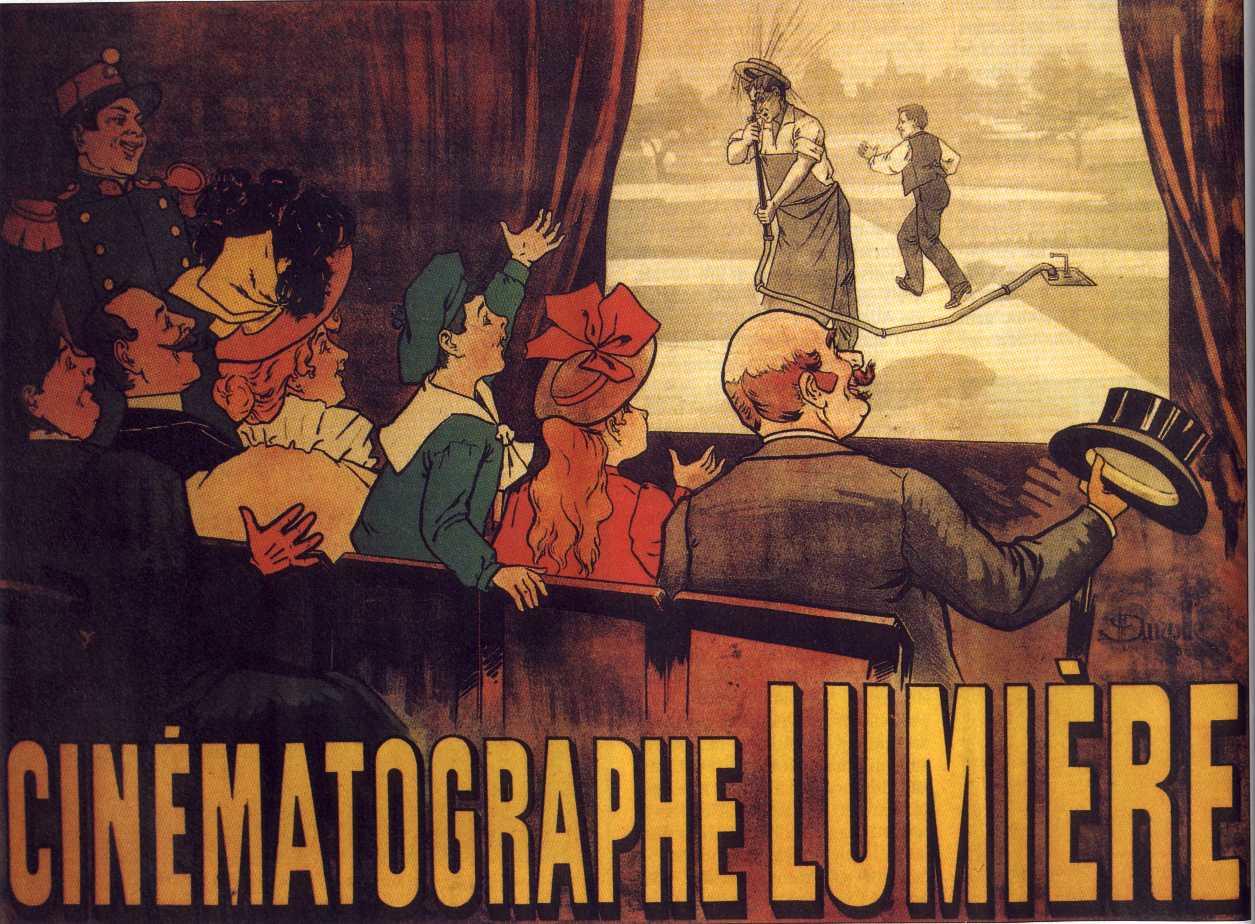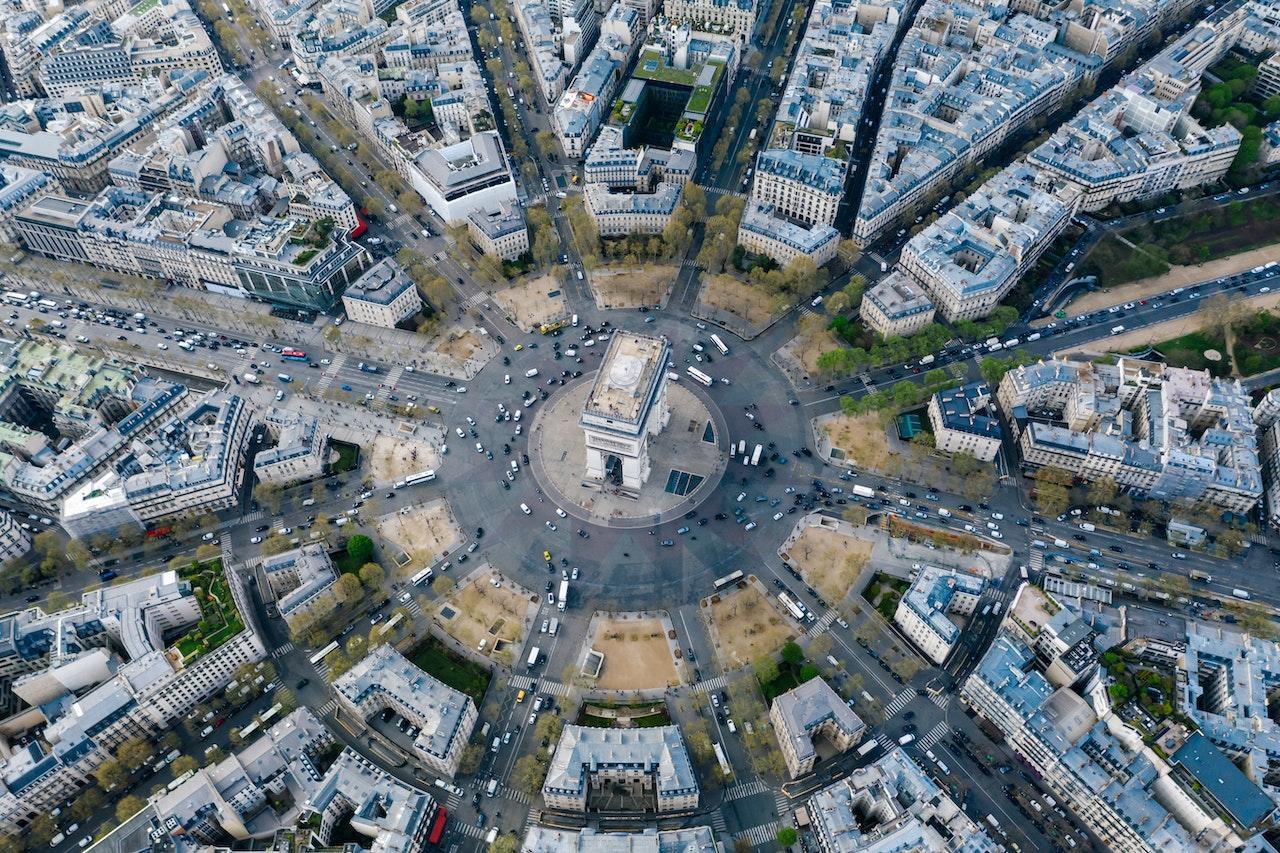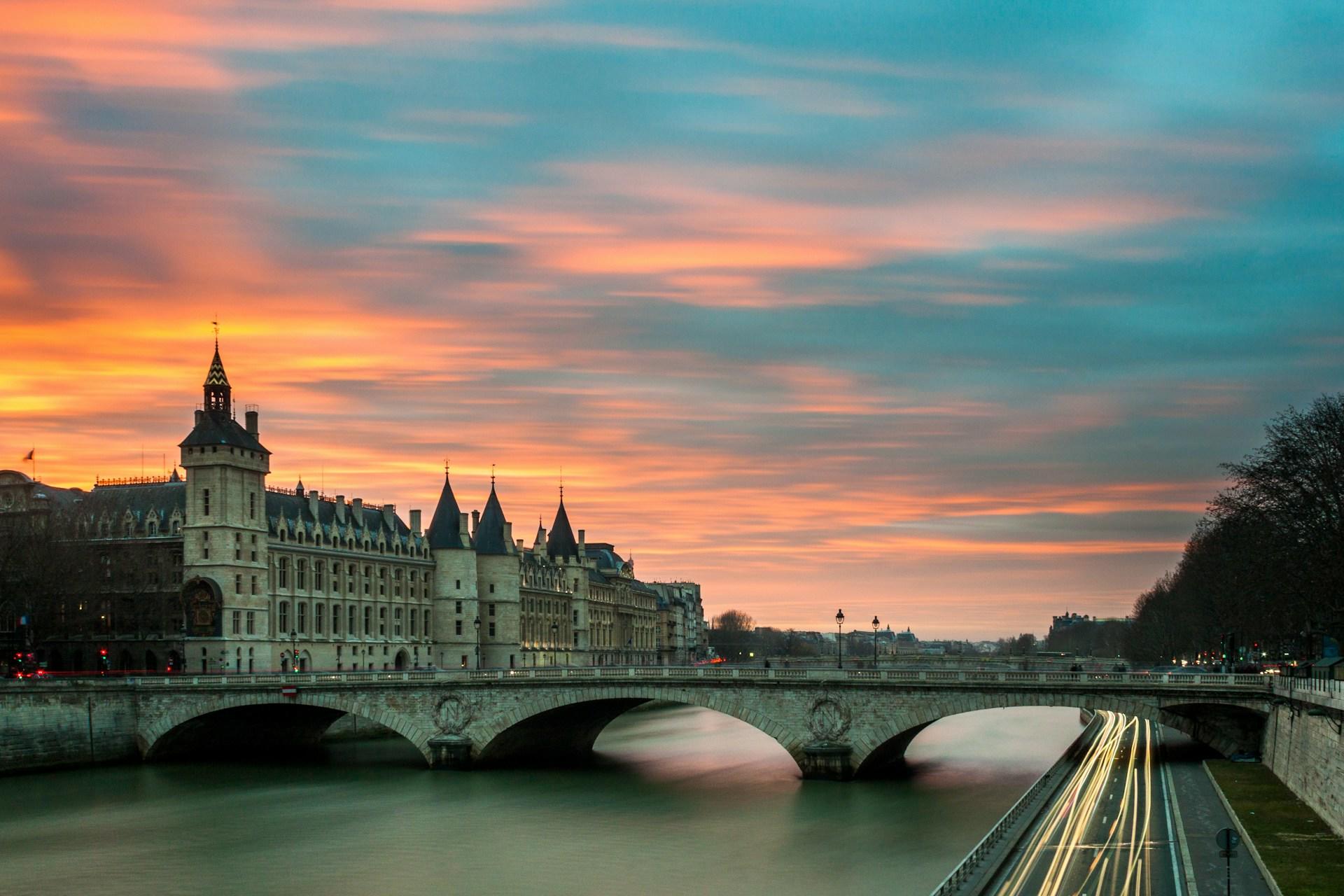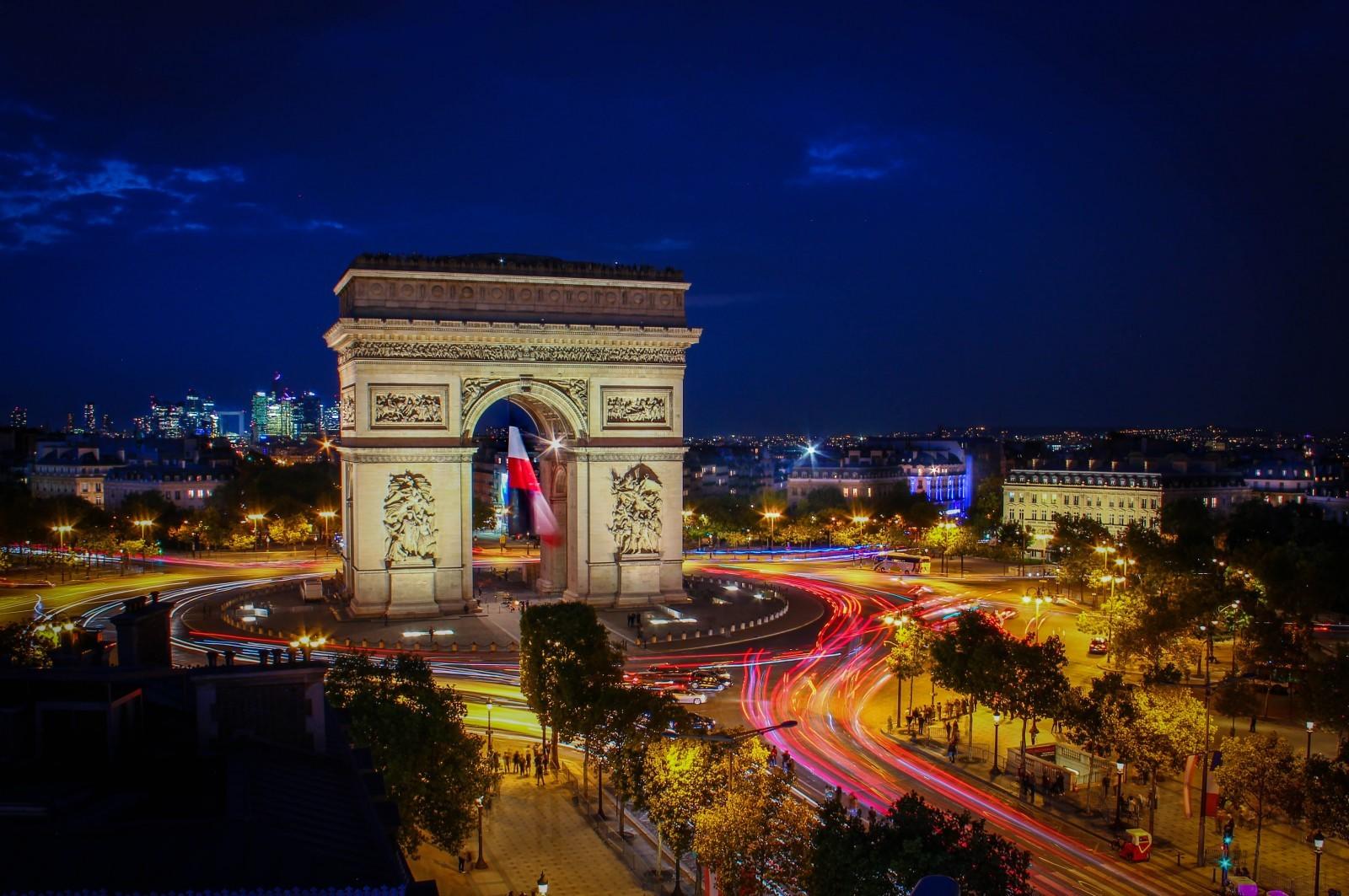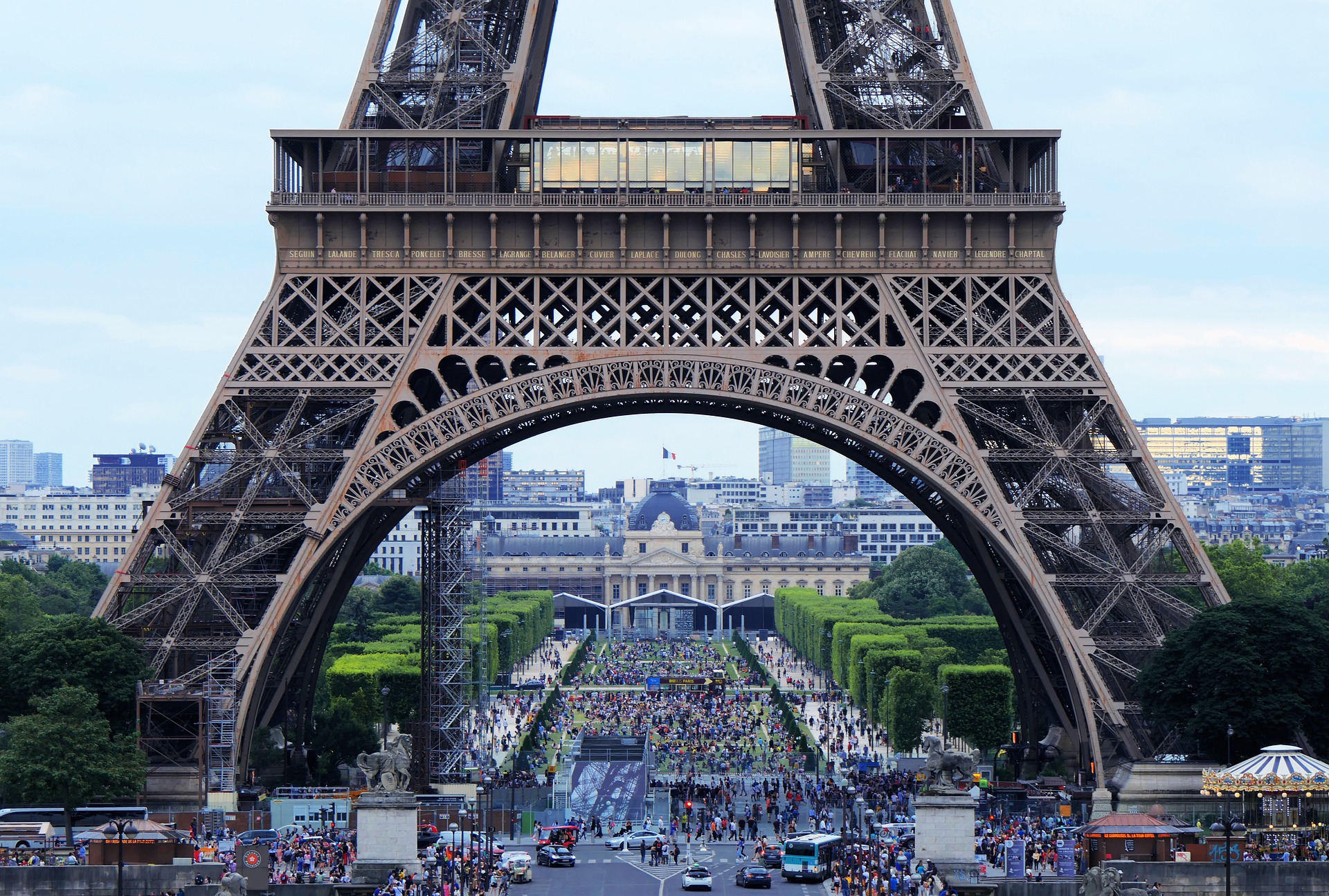“I pity the French Cinema because it has no money. I pity the American Cinema because it has no ideas.”
Jean-Luc Godard
Despite Hollywood often being synonymous with cinema worldwide, French cinema predates it. Japan's anime industry, Bollywood from India, and Chinese cinema are seemingly mentioned more frequently than French cinema.
French cinema doesn't get the credit it deserves, so let's examine its history and some incredible French films you should watch!

The Cinematograph: The Beginning of Cinema in France
French cinema (and cinema itself) began with the Lumière brothers. In a fine example of nominative determinism, Auguste and Louis, whose surname means "light" in French, created the Cinematograph.
Cinema is short for cinematography. The word comes from the Greek “kinema” (movement) and “graph” (to write or record) and literally means “writing or recording movement.”
The Cinematograph is pretty special because it recorded visuals and could also display them as a projector.
Though Thomas Edison had invented the Kinetoscope a few years earlier, in 1891, it was neither a projector nor a device for recording. Instead, this device allowed one user to view short films through a small window or peephole.
The Lumière brothers' Cinematograph, patented in 1895, could create films and allow more than one person to view them at a time.
Begin learning this beautiful language with French classes Sydney.

The device was also portable, and its claw mechanism moved the film more smoothly.
Weirdly enough, the brothers weren't particularly interested in cinema as an art form, and Louis even went so far as to say that it was "an invention without a future"!
French cinema in the 1900s: Méliès' Magic and France's First Films
While the Cinematographs' inventors didn't see the potential in their device or cinema as an art form, Georges Méliès saw boundless possibilities.
The French director was as creative as he was brilliant. In 1902, he arguably created the world's first sci-fi movie, A Trip to the Moon (Le voyage dans la lune), inspired by the 1865 Jules Verne novel From the Earth to the Moon.
By today's standards, the movie is quaint. You can watch it here. This version, likely running between 14 and 16 frames per second, lasts just 15 minutes.
Beyond A Trip to the Moon, Méliès' production company made hundreds of films. While most of them were in black and white, since film at the time didn't allow for colour, some features were colourised by hand.
Early Film Distribution in France
Film distribution companies started popping up, with cinema being something the masses could enjoy.
Distribution companies like Gaumont and Pathé (both of which still exist today) were founded in 1895 and 1896, respectively.
The First Female Director
Gaumont famously hired the pioneering French director Alice Guy. Not only did Alice Guy produce some of the first narrative fiction films, but she was likely the first woman to direct a film and was probably the only one at the time.
Her achievements are even more impressive, considering women couldn't vote in France until 1944!
The First Film Star
Pathé famously discovered Max Linder, who would be known as the "first international movie star" and "the first film star anywhere".
Max Linder started his career in supporting roles in short comedy films, where he regularly played a character named "Max."
He also served in the First World War, and the experience left him both physically and mentally scarred. Linder died at the age of 41 after committing suicide as part of a suicide pact with his wife.
Linder's legacy includes hundreds of popular performances. He also started the idea of a stage name for actors, choosing Max Linder because it was catchier and more marketable than his birth name, Gabriel Leuvielle.
Appreciate foreign films more when you take French classes Melbourne here on Superprof.
French cinema in the 1920s: Silent Movies
One of the main theatres of the First World War was centred around France and Belgium. While France led Hollywood and American cinema before this time, American cinema had overtaken French cinema by the end of the war.
French cinema at this time helped establish auteur theory, with one main person having most of the creative control on projects.
[The] theory of filmmaking in which the director is viewed as the major creative force in a motion picture.
French Cinema's First Forays into Auteurism
Take the 1927 silent epic historical film, Napoleon. It was written and directed by Abel Gance and lasted six hours. Even more impressive is that the film only covers Napoleon's early years, not the historical figure's entire life.
In a fine example of auteurism, the film's title is Napoléon vu par Abel Gance or "Napoleon as seen by Abel Gance".
Though Albert Dieudonné played the titular character, it's abundantly clear that this work is by Abel Gance. Writer, director, and actor Gance would play Louis Antoine de Saint-Juste, one of the major figures of the French Revolution.
The six-hour film was initially planned to be one in a series of six; hence, it only covers Napoleon's early life.
Watch the trailer for 1927's Napoleon here.
Period Dramas During France's Silent Period
French filmmakers established cinema as a narrative medium, and period dramas and literary adaptations were some of the most popular films.
For example, Henri Fescourt's 1925 silent film Les Misérables is based on the Victor Hugo novel of the same name, which would also inspire the musical and its cinema adaptation.
In fact, even the Lumière brothers made a short film called Victor Hugo et les principaux personnages des misérables (Victor Hugo and the main characters of Les Miserables) in 1897.
That's just under 6 hours!

French cinema in the 1930s
The 1930s were a pivotal time for cinema around the world. In the same way, the Lumière brothers' Cinematograph had made films a collective experience, the sound was about to bring a new dimension to filmmaking.
Only some filmmakers took to sound, though, with some finding it difficult to replicate earlier successes with sound.
The same was true for actors. Just because you were popular during the age of silent cinema in France, it didn't mean you'd remain a star once sound became part of making movies.
However, filmmakers like Jean Renoir worked out how to incorporate sound into his works. He made his final silent film, Le Bled in 1929, and never looked back. He made his first sound film, On purge bébé, in 1931.
During the 1930s, Renoir would make critically acclaimed films like La Grande Illusion (1937) and The Rules of the Game (1939).
If the name rings a bell, his father was the renowned Impressionist painter Pierre-Auguste Renoir.

Jean Renoir's nephew and Pierre-Auguste Renoir's grandson was the cinematographer Claude Renoir, who worked on films like The Spy Who Loved Me, Barbarella, and the French comedy classic La Grande Vadrouille.
Discover French lessons Brisbane easily when you search on Superprof!
World War II and French Cinema
Global conflicts often put an end to many forms of entertainment, especially in areas occupied by foreign invaders.
However, French cinema didn't completely stop while France was under Nazi occupation. Instead, Nazi soldiers needed entertainment, so some production continued. Admittedly, French filmmakers weren't given as much creative freedom as they had enjoyed during peace times.
With films like Pierre Véry's 1941 film Who Killed Santa Claus? and Carnival of Sinners (La Main du diable: The Devil's Hand). Were some French filmmakers at the time trying to say something?
However, French cinema didn't immediately return to its former glory the second the war ended. France had been ravaged by the war, so making movies wasn't a priority. For those who it was, there weren't the resources to allocate to the silver screen.
However, Jean Cocteau's 1946 film Beauty and the Beast made it clear that French cinema couldn't be stopped, no matter what happened in the country.
The first Cannes Film Festival was held in 1946. It celebrated the country's earlier cinematic triumphs and attempted to encourage future filmmakers.
These stories are the exception, though. American movies started making their way into France, and soon, French cinemagoers were more likely to watch films showcasing American culture and storytelling than their own culture.
At this time, the French government started taxing cinema tickets to help subsidise the industry. This tax still exists today!
Start learning French today with French lessons online on Superprof!
French Cinema in the 1950s and 1960s: La Nouvelle Vague (New Wave)
After a decade of recovery, French cinema started to find its feet and La Nouvelle Vague was born.
It brought with it stars like Alain Delon, Brigitte Bardot, Jean-Paul Belmondo, Catherine Deneuve, Claude Jade, and Stephanie Audran.
Auteurism was also again pushed to the forefront, with the idea that films should represent the director's ideals. Films from this time sought to exhibit poetic realism rather than period pieces.
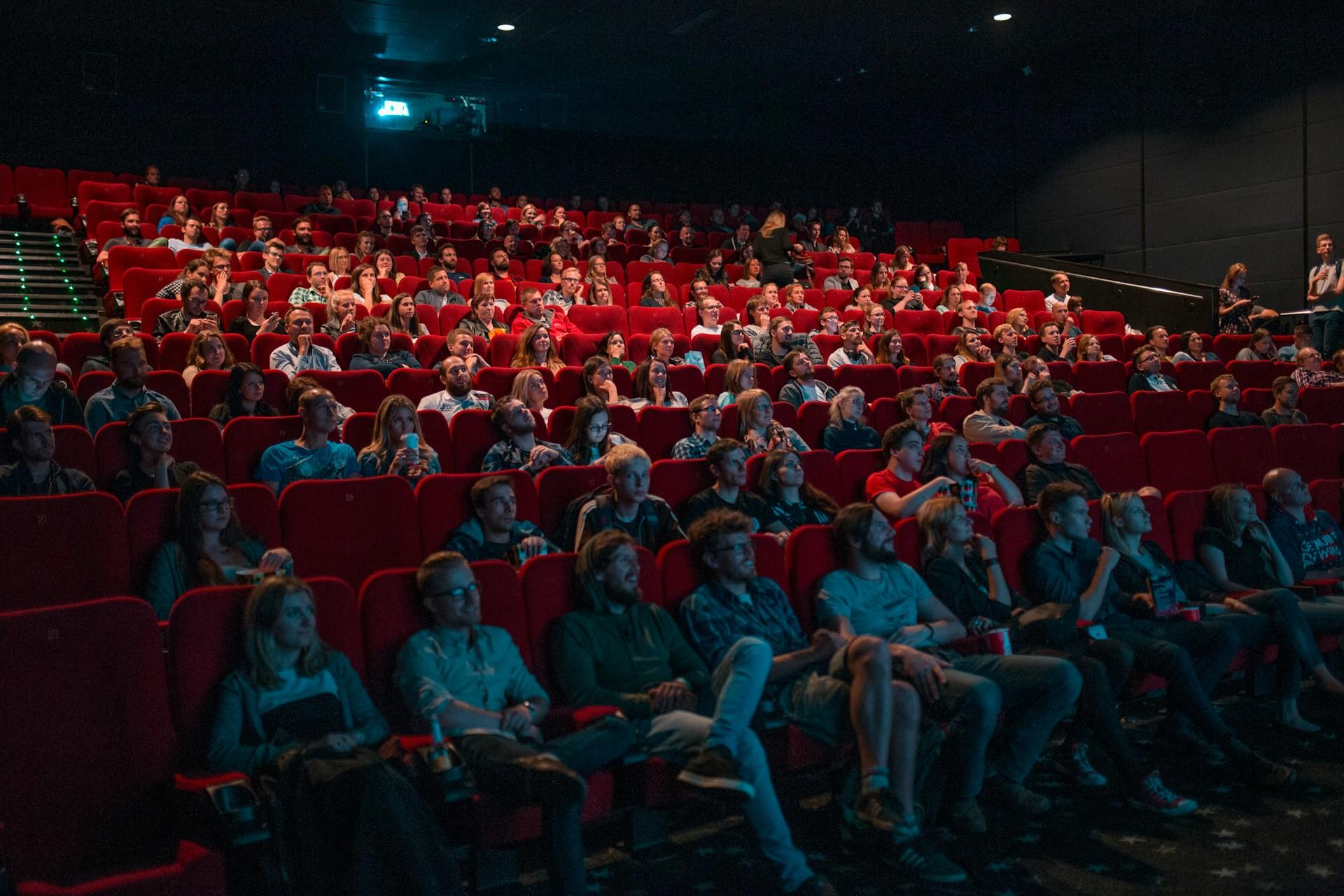
Some fine examples of the best French New Wave films include:
- 400 Blows
- Breathless
- Hiroshima mon Amour
- Le Mépris
- Pierrot le Fou
This brings us to more modern French movies and some of our favourites.
French Cinema from the 1980s to Now: The French Films You Should Watch
Outside of France, French cinema has a wrongly earned reputation for being pretentious or snobby. Still, you'll find just as much variation in French cinema as anywhere else.
French cinema is also somewhat less accessible. While dubbing is quite common in many places around the world, it is very unwelcome in most English-speaking countries.
For a long time, many English-speaking people were typically averse to watching films and series with subtitles, too. However, with the advent of streaming platforms and increased accessibility, more people than ever are watching movies and TV shows worldwide.
This is excellent news for anyone interested in watching French cinema or TV shows. After years of reluctance, you have even more great French films to watch!
Jean de Florette (1986)
Jean de Florette is a 1986 French drama film starring Daniel Auteuil, Yves Montand, and the titular character played by one of the greatest French actors ever, Gérard Depardieu.
When Ugolin Soubeyran returns to the countryside of Provence after serving in the military, he wants to grow flowers using the water from a spring on a neighbouring property.
The film was so successful that it helped boost tourism to the Provence region of France, not that it needs films to promote its beauty.
Watch the trailer for Jean de Florette here.
Manon des Sources (1986)
Manon des Sources (Manon of the Spring) is a 1986 French film by Claude Berri, the follow-up to Jean de Florette.
Both films were released in the same year, with the second film taking place 10 years after Jean de Florette's death.
Emmanuelle Béart plays the titular Manon, and Yves Montand and Daniel Auteuil reprise their roles from the previous film.
Watch the trailer here.
Delicatessen (1991)
Delicatessen is a French black comedy film directed by Jean-Pierre and Marc Caro. It takes place in a post-apocalyptic France where food is so rare that grain is used as currency.
The butcher shop on the ground floor of a dilapidated apartment block keeps advertising jobs, but let's say the employees only stay for a short time.
The film is pretty dark and perhaps not something you'd want to watch if you've just eaten or are about to, but if you're into dark and gruesome comedy, this film might be for you.
You can watch the trailer here.
La Haine (1995)
For many, La Haine is one of the greatest contemporary French films ever.
Dark, gritty, and brilliant, the film stars Vincent Cassel, Hubert Koundé, and Saïd Taghmaoui as the three main characters, three young men living in a poor Parisian suburb.
The plot covers a single day and night in the life of the protagonists following an urban riot.
The film was number one at the French box office when it opened and is highly rated for its accurate depiction of “social and economic divisions affecting 1990s Paris”.
Check out the trailer here.
Le Dîner de Cons (1998)
Le Dîner de Cons (known as The Dinner Game in English) is a 1998 French comedy film based on a comedy play of the same name.
The story follows some wealthy Parisians who have a weekly dinner where they attempt to bring along an idiot. The person bringing the weirdest dinner guest is crowned the champion of the dinner.
What could go wrong?
When Pierre Brochant brings “idiot” François Pignon, with his passion for making matchstick models of famous landmarks, hilarity ensues.
Amélie (2001)
Le Fabuleux Destin d'Amélie Poulain (The Fabulous Destiny of Amélie Poulain) was released under the title of Amélie in English-speaking markets.
The film is a romantic comedy about a girl raised and homeschooled by eccentric parents and ultimately becomes eccentric and imaginative herself.
Despite her mother dying when she was just six, Amélie remains imaginative and optimistic. Her father, however, becomes reclusive.
Amélie showcases Paris as a bright and wonderful place. The protagonist enjoys life's little pleasures while attempting to do the same for everyone she meets, both at her job as a waitress in a café and while out and about in Paris.
See how Amélie sees the world in the trailer.
Les Choristes (2004)
Les Choristes (The Chorus in English) is a beautiful French musical drama film directed by Christophe Barratier.
The story occurs in 1949 when a music teacher starts working at a boarding school for troubled boys.
The music teacher, Clément Mathieu, is passionate about music and has decided to take a different approach to teaching than the strict and authoritarian approaches adopted by the headmaster.
Through a choir, the teacher starts bringing about positive change in the boys' lives.
Here's the trailer for The Chorus. You may recognise the music, a remix of which later became a meme.
La Vie en Rose (2007)
La Vie en Rose isn't this film's French title. The biographical film about the life of the French singer Edith Piaf was called "La Môme" in France.
This was Edith Piaf's nickname, supposedly meaning "little sparrow", but French speakers may hasten to add that this term also can mean a "brat", as in an insolent child. Was this intentional?
The film covers Edith's life from childhood until her final days. One of France's greatest actresses, the always excellent Marion Cotillard, plays Piaf.
Here's the trailer for 2007's La Vie en Rose.
The Class (2008)
The Class was called Entre les murs (Between the walls) in France, a drama film about a French language and literature teacher in a challenging school.
The film won the Palme d'Or at the 2008 Cannes Film Festival and was the first French film to have done so for years. It was also nominated for the Best Foreign Language Film at the 2009 Academy Awards.
It's highly rated on Rotten Tomatoes and is another fine example of French cinema telling stories of the social structure in France, particularly about socioeconomic class, immigration, and the diverse makeup of contemporary French society.
The Artist (2011)
The 2011 French film The Artist is significantly different from many of the other films we've mentioned so far, but not those we discussed at the start of this article.
The film tells the story of a silent film star in the 1920s and 1930s and is predominantly silent.
It won five Oscars, including Best Picture, Best Director, and Best Actor. In France, it also won ten César Awards.
Watch the trailer.
The Intouchables (2011)
The Intouchables is a 2011 comedy-drama film based on the true story of a wealthy disabled man who befriends his working-class immigrant caregiver.
This film is incredibly funny and touching, with incredible performances from François Cluzet and Omar Sy.
This is one of those French films that found success both inside and outside France and another that many people outside France have seen and watched.
Here's the trailer if you're interested in watching it.
Amour (2012)
The 2012 romantic drama film Amour won the Academy Award for Best Foreign Language Film in 2013. It also won the Palme d'Or at the 65th Cannes Film Festival and 6 César Awards.
It stars Jean-Louis Trintignant and Emmanuelle Riva, two actors famous for their work in post-war French cinema and with impressive careers. Sadly, neither actor is with us anymore, but you can see them in this incredible film.
Watch the trailer here.
Finding French Films in Australia
Once upon a time, finding international films, including French films was a chore. However, thanks to modern streaming services, anyone with a decent internet connection can quickly access libraries of international movies and TV series. Many services often offer films with multiple language options for both dubs and subtitles.
That said, most of the films we've mentioned could be better to watch in a real cinema. We'd highly recommend looking to the Alliance Française French Film Festival, which is one of Australia's most significant film festivals and one of the best ways to see and discover French cinema.
Another way is to ask your French teacher or tutor. If you don't have one, you can always search for French tutors on the Superprof website.
Many of them offer the first session for free, and you could even look specifically for ones who are fond of that are fond of French cinema.
If you can't find any local French tutors, don't worry! Thanks to online tutoring, you can find tutors from all over the world and even look for native French tutors from French-speaking countries, including France!
Once your French is good enough, you won't need to worry about dubbing or subtitles. You can watch all these beautiful films in their original language. It's not that it matters too much for the early silent movies!
Begin your studies today with a French course here on Superprof!

